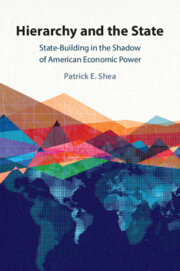Book contents
- Frontmatter
- Dedication
- Contents
- Figures
- Tables
- Acknowledgements
- 1 The United States and International State-Building Efforts
- 2 The International Politics of State-Building
- 3 Hierarchy, Property Rights, and State Capacity
- 4 The United States and External Property Rights
- 5 Measuring Hierarchy
- 6 Statistical Analysis of Hierarchy, Property Rights, and State Capacity
- 7 American Hierarchy and Its Discontents: Unpacking the Consequences for Partner States
- 8 Enter China
- 9 Hierarchy and the State in a Multipolar World
- References
- Index
- References
References
Published online by Cambridge University Press: 20 August 2025
- Frontmatter
- Dedication
- Contents
- Figures
- Tables
- Acknowledgements
- 1 The United States and International State-Building Efforts
- 2 The International Politics of State-Building
- 3 Hierarchy, Property Rights, and State Capacity
- 4 The United States and External Property Rights
- 5 Measuring Hierarchy
- 6 Statistical Analysis of Hierarchy, Property Rights, and State Capacity
- 7 American Hierarchy and Its Discontents: Unpacking the Consequences for Partner States
- 8 Enter China
- 9 Hierarchy and the State in a Multipolar World
- References
- Index
- References
Summary

Information
- Type
- Chapter
- Information
- Hierarchy and the StateState-Building in the Shadow of American Economic Power, pp. 203 - 230Publisher: Cambridge University PressPrint publication year: 2025
